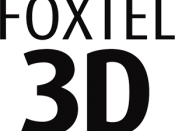The effects of Digital Technology on FOXTEL
and the strike that followed. A analysis of
the effect keeping Bolman & Lee's Reframing
Organizations in mind.
The Organization - FOXTEL
FOXTEL, Australia's leading subscription television provider, launched its revolutionary digital TV service, FOXTEL Digital, on 14 March offering consumers a totally new television experience with an unparalleled choice of more than 130 digital channels and services.
Over $600 million was spent launching Foxtel Digital. Right now Foxtel only has a market penetration of around 23%, which theyùre aiming to bring to 40% by 2008, so they had gone all out to make their roll out a revolution in TV. And it was certainly a revolution - one thatùs taken nine years to bring about. There has never been anything like this in Australia. Foxtel Digital's launch has put digital TV on the map - and itùs safe to say there are a lot of businesses counting on that.
Better picture quality and sound are just the beginning. Its interactive functionality is eventually going to change the way shows and ads are produced.
The introduction of new technology called DIGITAL TV?
The digital technology allows for a far superior image quality, increasing sharpness, and we can watch many programs in widescreen. Free to air is able to broadcast in a superior format, High Definition (HD). Sound quality is also improved, providing CD-quality 2.0 stereo sound for most programs - and Dolby 5.1 surround sound for some (depending on bandwidth and broadcast contracts). As per the Law by 2008 free-to-air TV has to equal its analog broadcast (currently reaching about 98.9% of Australia's population) with the new digital technology. This means every channel has had to upgrade its studio and broadcast technology to digital. Free-to-air TV is broadcast by a Terrestrial Digital...


